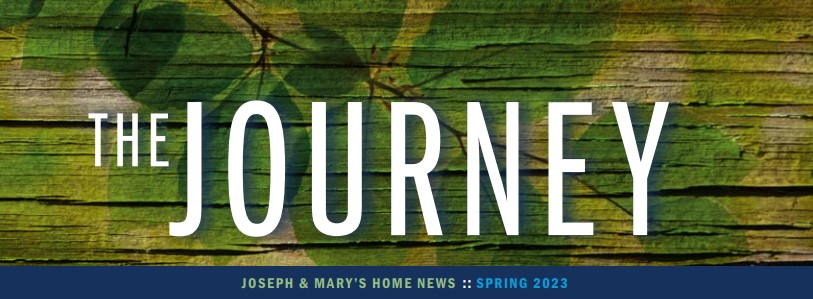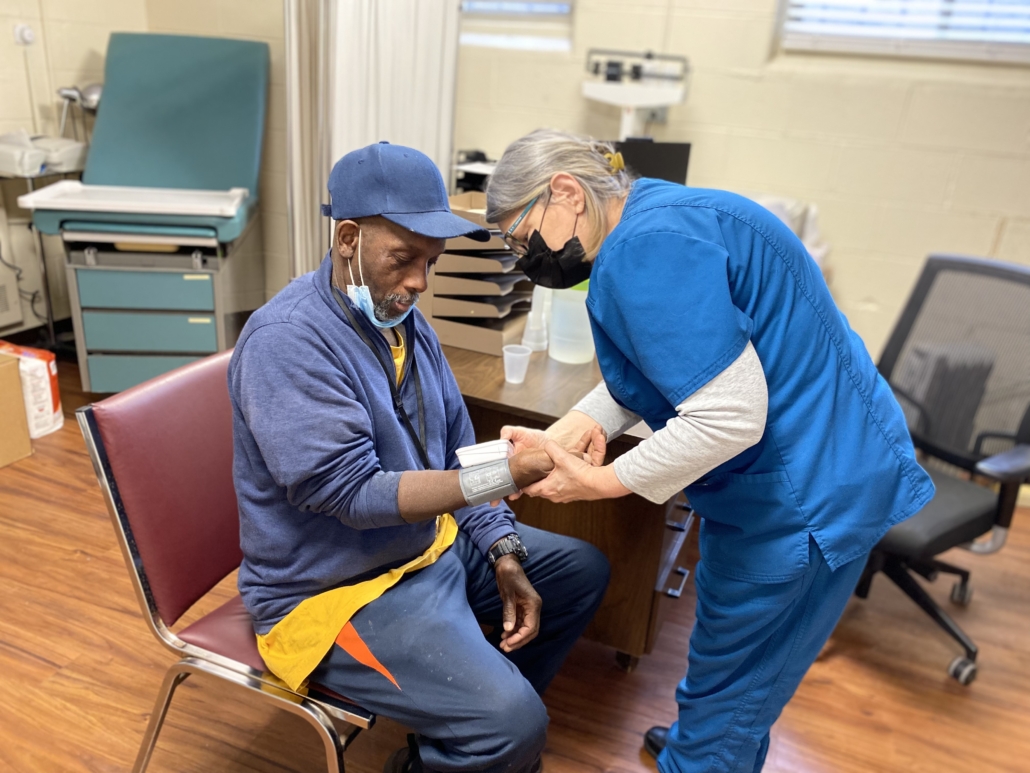The recent issue of The Journey, the biannual newsletter of Joseph & Mary’s Home, features a cover article about a pilot program with Cleveland Clinic to quantify benefits of the medical respite model and document best practices. The newsletter also has news about outcomes in 2022, a donor spotlight focused on monthly giving, a donor honor roll and more updates.
Below is the text from the cover story. Read the complete newsletter here.

Advancing the Medical Respite Model
Pilot program with Cleveland Clinic aims to quantify benefits and document best practices
For Mary’s Home alum Olivia, the term “medical respite” now means feeling safe while getting her health back on track. A widowed woman in her 60s who had recently been evicted from her apartment due to her roommate’s move into a nursing home, Olivia had nowhere to go after being hospitalized for diabetes, anxiety and depression. Cleveland Clinic Lutheran Hospital referred her to Joseph & Mary’s Home.
“I was totally overwhelmed because I had never been homeless before. The staff shared it was a respite. I didn’t know what that meant,” Olivia said. The term meant a whole lot more to Olivia three months later after she stabilized her health and signed a lease for a new apartment, which she moved into in mid-January. “The staff make you feel welcome and they really listen. They help you accomplish your goals,” Olivia added.
Joseph & Mary’s Home has provided medical respite to hundreds of people experiencing homelessness like Olivia. Medical respite is an emerging practice quickly growing nationwide, with its success in helping hospitalized patients safely recuperate and transition to housing and self-care. Joseph & Mary’s Home is one of only three medical respite programs serving medically-fragile adults experiencing homelessness in Ohio.
“Olivia’s story and other remarkable stories like hers show us that we play a crucial role in the overall continuum of homeless services,” said Beth Graham, executive director, Joseph & Mary’s Home. “Now, we want to compare the outcomes for people that receive our care to outcomes for people who leave the hospital without medical respite as an option. Since medical respite is still unfamiliar to some, there remains a need in the Cleveland area and in Ohio to show evidence of its value.”
The Pilot Program
To gather evidence, Joseph & Mary’s Home collaborated with the Cleveland Clinic in early 2022 to develop a medical respite and care coordination pilot and evaluation project. The Cleveland Clinic is referring some patients experiencing homelessness to Joseph & Mary’s Home when discharged from the hospital. The program monitors outcomes of patients receiving medical respite care compared to patients who are discharged to non-respite alternatives (treatment as usual).
Results of the pilot program will be published in mid-2024 in a detailed study with the Cleveland Clinic Statistics Department with funding from the United Way of Greater Cleveland. The Ohio Capital Investment Corporation is an additional program funder. Several experts from national, state and local organizations are serving as a volunteer advisory group for the study.
“We expect the study to confirm what we know: medical respite improves health and housing outcomes for individuals experiencing homelessness,” said Beth. “We also expect to see, as a result of improved health, less emergency room use and fewer hospitalizations. Hospitals, insurers and public agencies will take notice of improved health and cost savings, which could result in greater funding support. We also plan to share our findings broadly to provide best practices to others who want to expand the medical respite model in their communities.”
Kenneth Surratt, vice president, community investment and chief investment officer at the United Way of Greater Cleveland, said the organization is pleased to be the lead funder of the pilot project with its goals of helping advance health equity and housing stability for the most vulnerable in the community. “Through our 211 hotline we are aware of the need for services like those offered by Joseph & Mary’s Home. This study will elevate the conversation around health system and community organization partnerships to help end homelessness and the importance of funding innovative programs like medical respite that have proven results of helping people,” he added.
How Much Do Outcomes Improve?
Researchers will study patient outcomes over the duration of the pilot program. The expectation is that outcomes will be improved in a number of areas, including:
• Higher rates of permanent housing
• Increased income and increased non-cash benefits
• Fewer readmissions following hospitalization
• Reduced use of emergency departments and inpatient bed days
• Reduced mortality
• Increased participation in ongoing primary care, preventative care and behavioral health care
• Greater use of medications as prescribed
The pilot is also being used to study best practices on how to support patients with complex health and social needs. And, how to have the most seamless and coordinated transitions when a patient is referred to Joseph & Mary’s Home and also when they have stabilized their health and begin the next step of their journey.
Cleveland Clinic is the health system partner on the pilot program, but Joseph & Mary’s Home continues to receive referrals from all of Northeast Ohio’s major health systems: University Hospitals, MetroHealth, St. Vincent Charity Community Health Center and Cleveland Clinic.
Kristine Adams, associate chief nursing officer, Cleveland Clinic Care Management & Ambulatory Services, is the pilot program lead on the hospital side. She said Cleveland Clinic wanted to be involved because medical respite is a much-needed service, but one that is still relatively uncommon.
“We feel it is our duty as a research institution to study the benefits to patients, communities and health systems. We are so blessed to have Joseph & Mary’s Home as a resource in our community. As we discharge patients from our hospitals, we want their care and healing to continue in a safe and therapeutic space,” said Kristine Adams, MSN, CNP
She added that findings could spark interest in other communities to have a similar resource and also give those communities an evidence-based set of processes on how to work with a health system.
“We hope this is just the beginning for further study and further collaboration with Joseph & Mary’s Home,” she said.
For more information about medical respite care, please visit the National Institute for Medical Respite Care website at nimrc.org


